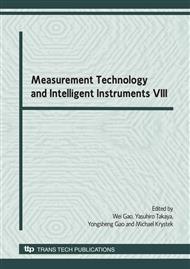p.465
p.469
p.473
p.477
p.481
p.485
p.489
p.493
p.497
A New Method and Characterization for Pollution Preventing of Camera Window
Abstract:
This research is focused on the development of protecting system for window. In detail, we tried to develop pollution preventing system of a glass, mirror, or camera lens. For this, the new method for efficient pollution prevention was designed and the characteristic evaluation for developing the system is partly performed. Formerly, the method using air purge is generally used for preventing the pollution of camera window. However, the conventional method often induces contaminations due to back flow of air purging. These pollutants can be crucial damage to the camera window and peripheral materials especially in clean room condition. And the conventional method always requires air supply, therefore it is difficult to apply the method where air source can not be supplied such as traveling crane located at mountain altitudes. To solve above mentioned the problem, the efficient concept for preventing pollution of camera window is proposed in this research. Without air purging, we proposed the new method using repulsion induced by electrifying dirty or moisture to positive magnetic force with high-voltage charge and then injecting gas to the ITO(Indium Tin Oxide) coating window for generating positive ion. To sum up, in this research, we aim to develop an efficient pollution preventing system for camera window based on the new method through characteristic evaluation and stabilization of the designed system.
Info:
Periodical:
Pages:
481-484
Citation:
Online since:
June 2008
Authors:
Keywords:
Price:
Сopyright:
© 2008 Trans Tech Publications Ltd. All Rights Reserved
Share:
Citation:


